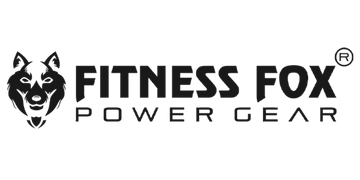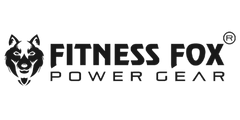A lever weight lifting belt is specifically designed to enhance stability and support your lower back during intense lifting sessions. These belts are equipped with a lever closure system that allows for quick tightening and releasing, offering a consistent and secure fit throughout your routine. The primary benefits of using a lever belt include improved intra-abdominal pressure and posture, which help in executing heavy lifts more safely and effectively.
Using the belt correctly is paramount to maximizing these benefits while minimizing the risk of injury. Incorrect usage can lead to dependence, improper form, or even direct injury to the spine or abdominal region. Therefore, understanding how to fit, wear, and lift using this tool is essential for any lifter looking to incorporate a lever belt into their regimen safely.

Choosing the Right Lever Belt
Selecting the right lever weight lifting belt is crucial to ensure effective support and comfort during your lifts. Here are the key factors to consider:
- Width: The belt's width should provide ample coverage without hindering your movement. A four-inch belt is standard for general lifting, supporting the back evenly.
- Thickness: A thicker belt, typically around 10 to 13 millimeters, offers more stiffness and support, ideal for heavy powerlifting. Thinner belts might be more comfortable but provide less support.
- Material: Leather belts are durable and offer great support, while synthetic materials might be lighter and more flexible.
- Size: Getting the correct size is critical for the belt to function properly.
How to Measure for the Proper Fit:
- Measure Your Waist: Use a measuring tape around your waist, passing over your navel. Do not suck in your stomach; stand relaxed.
- Check Sizing Charts: Compare your measurement with the belt manufacturer’s sizing chart.
- Consider Your Lifting Style: Adjust the fit based on whether you prefer a tighter feel for heavier lifts or a more comfortable fit for general workouts.
Properly sizing and selecting your belt ensures maximum effectiveness and comfort, enhancing your lifting performance while reducing the risk of injury.
Putting on the Lever Belt
Properly securing a lever weight lifting belt ensures it provides the necessary support and comfort during your lifts. Follow these step-by-step instructions:
- Position the Belt: Wrap the belt around your midsection so that it sits just above your hips and below your ribcage. The belt should be tight but not restrict breathing or movement.
- Close the Belt: Insert the end of the belt through the lever system. Ensure the belt lies flat against your body without any twists.
- Secure the Lever: Push the lever down until it clicks into place. The lever should be firm and secure, indicating the belt is properly fastened.
- Adjust for Comfort: Before lifting, perform a few practice bends and squats. The belt should stay in place and not slide up or down.
- Adjust the Lever Tightness: If the belt feels too tight or too loose, open the lever and adjust the belt’s tightness. Most lever belts have adjustable screws on the lever mechanism that allow you to set the tightness to your preference.
Ensuring your lever belt is properly secured will help maximize its effectiveness and your safety during lifts, providing the right balance of support and flexibility.
Bracing Your Core
Core bracing is essential when lifting with a lever belt, as it enhances stability and supports the spine. Here’s how to effectively brace your core during lifts:
- Understand Core Bracing: Core bracing involves tightening your abdominal muscles to create a solid base that supports your spine. This is crucial when lifting heavy weights, as it helps distribute the load evenly and reduces the strain on your back.
- Techniques for Effective Bracing:
- Breathe Deeply: Before lifting, take a deep breath in to fill your lungs. This increases intra-abdominal pressure, providing a natural brace.
- Tighten Your Abs: Imagine preparing for a punch to the stomach. Tighten your abs as if you’re about to be hit. This tightens the core and locks it in place.
- Expand Your Ribcage: As you breathe in, try to push your ribcage outwards and downwards, not just forwards. This maximizes the pressure and stability provided by the belt.
- Hold Your Breath: Maintain your breath as you initiate the lift to keep the pressure consistent. Exhale only after completing the most strenuous part of the lift.
Mastering these core bracing techniques can significantly enhance your performance and safety when lifting with a lever belt, ensuring optimal protection and effectiveness.
Breathing Technique
Mastering proper breathing techniques is crucial when lifting with a lever belt to maximize performance and safety. Here’s how to ensure you’re breathing correctly during your lifts:
- Proper Breathing Patterns:
- Inhale Before Lifting: Begin by taking a deep breath in before you start the lift. This fills your lungs and increases intra-abdominal pressure, which is essential for core stability.
- Hold Your Breath During the Lift: Maintain your breath as you lift, keeping the abdominal pressure high to support your spine.
- Exhale After Completing the Lift: Once you’ve passed the most challenging part of the lift, begin to exhale slowly. This helps in gradually reducing the intra-abdominal pressure.
- Avoiding Common Breathing Mistakes:
- Avoid Shallow Breathing: Shallow breaths do not provide sufficient abdominal pressure for heavy lifting. Always aim for deep, full breaths.
- Do Not Exhale Too Early: Releasing your breath too early in the lift can decrease the pressure needed to protect your spine, increasing the risk of injury.
- Consistency is Key: Ensure your breathing is consistent and rhythmic to maintain focus and stability throughout your session. Random or sporadic breathing can disrupt your form and effectiveness.
By following these guidelines, you can enhance your lifting technique with a lever belt, ensuring each lift is performed with maximum efficiency and safety.
Brace and Lift
Effective lifting with a lever belt involves maintaining proper form and leverage. Here’s how to ensure you initiate and execute your lifts correctly:
- Cues for Initiating the Lift with a Braced Core:
- Set Your Stance: Position your feet shoulder-width apart. Ensure your footing is stable and balanced.
- Engage Your Core: Tighten your core as if bracing for impact, utilizing the techniques of deep inhalation and abdominal tightening.
- Align Your Spine: Keep your back straight and your chest up. Avoid rounding your back to prevent undue stress on your spine.
- Maintaining Proper Form and Leverage Throughout the Lift:
- Keep the Bar Close: Whether you are squatting or deadlifting, keep the bar as close to your body as possible. This minimizes leverage against you and reduces the risk of injury.
- Drive Through Your Heels: Focus on lifting the weight by pushing through your heels, which helps maintain balance and maximizes power.
- Head and Chest Up: Always keep your head and chest up throughout the lift. This alignment helps maintain a neutral spine and distributes the weight more evenly.
- Complete the Movement: Finish your lift with a strong posture, ensuring you fully extend where necessary and reset calmly.
Adhering to these cues and maintaining proper form will help you lift more effectively and safely, maximizing the benefits of using a lever belt.
When to Use the Lever Belt
Using a lever belt effectively involves knowing when it’s most beneficial. Here are the guidelines for optimal use:
- Recommended Lift Types and Weight Loads for Lever Belt Usage:
- Heavy Compound Lifts: Utilize the lever belt for lifts that stress the lower back, such as squats, deadlifts, and overhead presses.
- Max Effort Lifts: Employ the belt when attempting maximal lifts or when lifting weights close to your one-rep max. This provides additional support and increases safety.
- Progressive Overload: As you gradually increase the weight in your training sessions, using a lever belt can help manage the added stress on your body.
- Avoiding Overreliance on the Belt:
- Do Not Wear for Every Lift: Reserve the belt for heavier lifts where extra support is needed. Using it too frequently can lead to a dependency that may weaken your core muscles over time.
- Train Without the Belt Regularly: Incorporate belt-free sessions to strengthen your core and ensure muscle balance and proper lifting technique development.
- Listen to Your Body: Use the belt judiciously, based on your body’s response to different weights and types of exercises. It’s important not to rely solely on the belt for performance improvements or pain mitigation.
Understanding when and how to use a lever belt will maximize your training effectiveness while promoting long-term strength and stability.
Safety Considerations
Using a lever belt requires awareness of safety to prevent injuries. Here are the potential risks and tips for safe usage:
- Potential Risks of Improper Lever Belt Usage:
- Increased Injury Risk: Incorrect positioning or over-tightening of the belt can lead to increased pressure on the abdomen and spine, potentially causing injuries.
- Dependency: Overreliance on the belt for support can lead to weakened core muscles, reducing natural stability and increasing the risk of injury when lifting without a belt.
- Breathing Difficulties: Too tight a fit can restrict breathing, leading to dizziness or cardiovascular strain during intense lifts.
- Tips for Preventing Lower Back Injuries:
- Proper Fit and Adjustment: Ensure the belt fits snugly but allows for deep breathing. Adjust it as needed depending on the exercise and comfort level.
- Strengthen Core Muscles: Regularly train your core muscles without the belt to build natural strength and endurance, providing better support for your spine.
- Learn Proper Techniques: Educate yourself on the correct lifting techniques and always warm up before lifting to prepare your muscles and spine for the load.
- Listen to Your Body: Pay attention to any discomfort or pain. If a lift feels wrong, stop and adjust your technique or reduce the weight.
Following these safety considerations can help you use a lever belt effectively while minimizing the risk of injury, ensuring a safer and more productive lifting experience.
Fitness Fox Lever Belts
Fitness Fox offers a range of lever belts that are designed to support and stabilize powerlifters during intense lifting sessions. These belts are constructed with high-quality suede leather and feature a lever buckle system, which allows for quick and easy adjustments to achieve a tight, secure fit. This mechanism ensures that the belt remains snugly in place, providing consistent support to the core and lower back areas. The lever belts come in various sizes to accommodate different waist measurements and are typically about 4 inches wide, ensuring ample coverage for maximum support. The construction of the belts balances rigidity and flexibility, offering optimal core support while allowing some movement for comfort during lifts. Each belt is crafted with attention to durability and functionality, aimed at enhancing performance and reducing the risk of injury during heavy lifting. Fitness Fox lever belts are particularly noted for their durability, crafted with a combination of suede bark and cowhide to withstand the demands of rigorous training sessions. They are available in different colors and come with a 3-year warranty, emphasizing their quality and the brand's commitment to customer satisfaction






Leave a comment